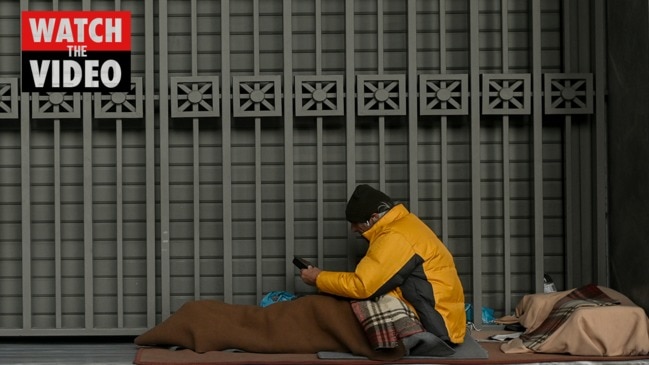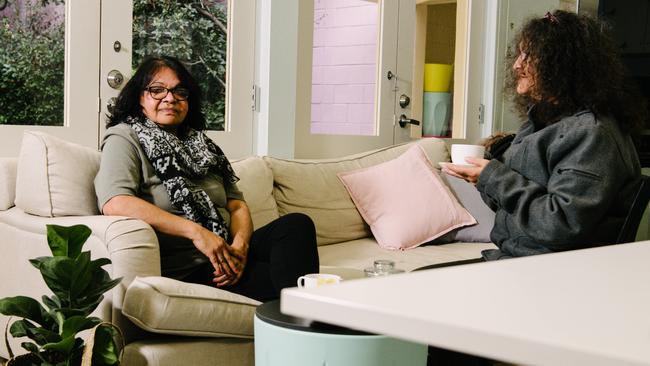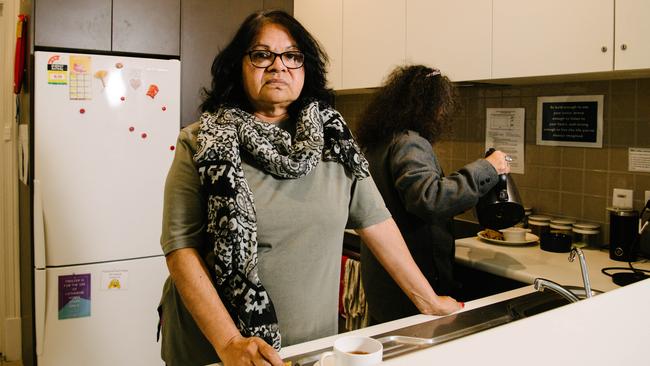Women aged over 55 are the fastest-growing group of homeless Australians
Soaring domestic violence rates. The rising cost of housing. The gender pay gap. It’s all taking a toll on Australia’s fastest-growing group of the homeless.

- Latest count shows 226 homeless in Adelaide each night
- Cost of emergency hotel rooms for homeless soars
- New crisis beds to open by the end of 2019
No-one expects to end up homeless and Vera was no different.
The 54-year-old had always held a job to put a roof over her head but, late last year, a series of health and family issues meant she had to resign from her job in corrections, where she had developed post-traumatic stress disorder.
The loss of income meant she lost her rental property. Family problems meant she couldn’t live with relatives.
“I even put something on Facebook asking if any of my friends had a room to rent,” she said. “I had nowhere to go.”
And just like that, Vera had joined the fastest-growing group of homeless Australians.
Census data shows the number of older women without a place to live grew by a third between 2011 and 2016.
Frontline workers say the trend has worsened amid an ageing population, affordable housing shortage, persistent gender pay gap and soaring rates of domestic violence. By pure luck, a counsellor suggested Vera try Catherine House.

“This place has changed my life,” she now tells The Advertiser.
The Adelaide homeless shelter has room for 52 women a night and is always full.
In 2016, 6866 Australian women aged over 55 were homeless on census night.
In 2017-18, more than 13,800 older women sought help from homeless services – up 63 per cent over five years.
Catherine House chief executive Louise Miller-Frost said workers were seeing the trend in Adelaide, including among women in their 60s and 70s. They were often “shocked” to find themselves homeless and struggling to navigate a complicated welfare system.
“Women often end up on the street with no idea that they’re actually eligible for Centrelink … or how to get it,” she said.
Ms Miller-Frost said homelessness could often be prevented by intervening at the first sign of trouble and urged authorities to consider a fund that could provide grants or loans of a few hundred dollars.
This could help someone release a car from an impound yard so they could travel to live with family or hire a removal truck to retrieve belongings and ID after fleeing a violent home, she said.
“This would be so much cheaper than the cost to the community of somebody being homeless,” she said.
Australian Institute of Health and Welfare data shows domestic violence is the leading cause of homelessness among older women (34 per cent), followed by financial difficulties and being unsafe where they live.
Women also face gender-specific risks to their financial insecurity as they age.
Age Discrimination Commission reporting shows almost half of women aged 45 to 64 have less than $40,000 in superannuation. This is largely because of the persistent gender pay gap (around 14 per cent) and time out of the workforce to have children.
By retirement age, a third of women are single, which leaves them less likely to own a home.
The Zonta Club of Adelaide Flinders Inc. is so concerned it recently invited MPs to speak at an event focused on the issue. President Heather Smigiel said Australia was “witnessing an alarming spike in older women finding themselves on the verge of homelessness” because of issues including domestic violence or limited savings.
Shelter SA executive director Alice Clark said the true extent of the problem was likely hidden as women couch-surfed with friends or family or lived in cars to stay off the streets.
“They’re the women we don’t see (in the statistics),” she said. Labor spokeswoman Nat Cook said the “next generation” of women would have “some superannuation on board, but not if they’ve been out of the workforce a lot”.
She suggested authorities explored build-to-rent housing schemes or tailor loans or shared equity arrangements to older women.
Human Services Minister Michelle Lensink said a new Housing and Homelessness Strategy would be finalised by the end of the year.
A Women’s Employment and Leadership Strategy, to be released next year, would also help because “economic independence can help prevent homelessness”, she said. The Government has allocated $4 million to open 40 new domestic violence crisis beds, $21 million to build 90 Housing Trust homes and $21 million to upgrade up to 450 properties. Interest-free loans of up to $10,000 will be offered to help 200 low-income earners enter the property market.
I was shocked to find myself with no home
WHEN Claudia looks back, she can see how she ended up homeless – but everything is clearer in hindsight.
In 2003, she was living with her two teenage boys in a Housing Trust home and holding down a job.
But harassment at work drove her to leave, and that changed everything.
In the wake of that incident, the now 58-year-old was diagnosed with bipolar disorder and the painful condition fibromyalgia.

In a cruel twist, the antidepressants she was prescribed for her bipolar triggered a manic episode which prompted Claudia to inexplicably surrender her Housing Trust home and flee overseas.
There, she floated between the homes of family and friends until she returned to Adelaide three years later - jobless and homeless.
Afraid of sleeping on the streets, Claudia resorted to spending “a week here, a month there” on friends’ couches until she was finally referred to Catherine House women’s shelter after calling a mental health crisis line.
“When I look back now, I find it shocking,” Claudia said.
“I’ve seen women on the streets. I’ve met women who have been living in their car.
“I was convinced I had no future.”
But with the help of Catherine House case managers, Claudia has learned to manage her illness, is on the public housing waiting list and has plans to study and later work in the mental health sector.
“Now that I’m better, I’d like to have a place of my own,” she said.
Homelessness Gateway Service: 1800 003 308 , Domestic Violence Crisis Line: 1800 800 098

